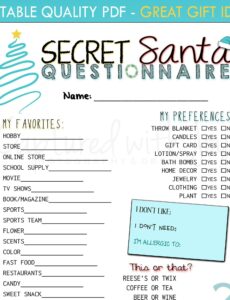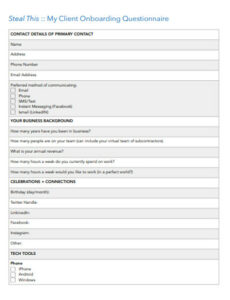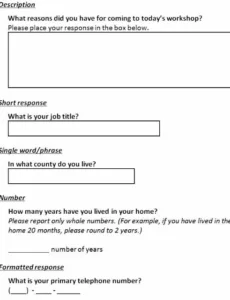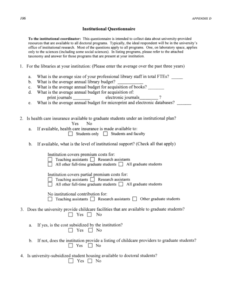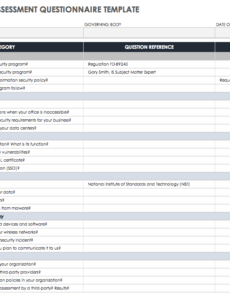Gathering comprehensive feedback is an invaluable tool for professional development and organizational growth. In today’s dynamic work environment, understanding how peers, managers, and subordinates perceive one’s performance can unlock significant insights, fostering a culture of continuous improvement. It moves beyond traditional top-down appraisals, offering a holistic view that often highlights blind spots and areas for strength that might otherwise go unnoticed.
The success of such a system, however, hinges significantly on the quality of the questions asked. A well-designed 360-degree feedback questionnaire template acts as the backbone of this process, ensuring that the feedback collected is relevant, actionable, and truly reflective of an individual’s contributions and behaviors. It provides a structured approach, making it easier for participants to give thoughtful responses and for organizations to derive meaningful data.
Crafting Your Ideal 360 Degree Feedback Questionnaire
Developing an effective 360-degree feedback questionnaire requires careful consideration of your organization’s specific goals and the competencies you wish to assess. Before even putting pen to paper, or fingers to keyboard, define what success looks like for the individuals and teams you’re evaluating. Are you aiming to improve leadership skills, foster better teamwork, enhance communication, or bolster problem-solving capabilities? Clearly outlining these objectives will directly inform the types of questions you include and the feedback you hope to receive.
Once your objectives are clear, you can begin to structure your template, ensuring it covers all critical areas relevant to performance and development. It’s not just about what someone does, but how they do it. Consider including sections that delve into interpersonal skills, work ethic, decision-making, and professional growth. A balanced questionnaire will incorporate a mix of rating scales and open-ended questions, allowing for both quantitative comparison and qualitative insights. This blend provides a richer, more nuanced understanding of an individual’s performance, offering concrete data alongside anecdotal evidence.
The design of the questions themselves is paramount. Avoid leading questions or those that are too vague. Instead, strive for clarity, specificity, and neutrality. For example, instead of asking “Is John a good leader?”, rephrase it to “To what extent does John effectively delegate tasks and empower his team?” This level of detail encourages more objective and helpful responses. Remember to consider the context from which feedback is being given, as a peer’s perspective might differ from that of a direct report or a manager.
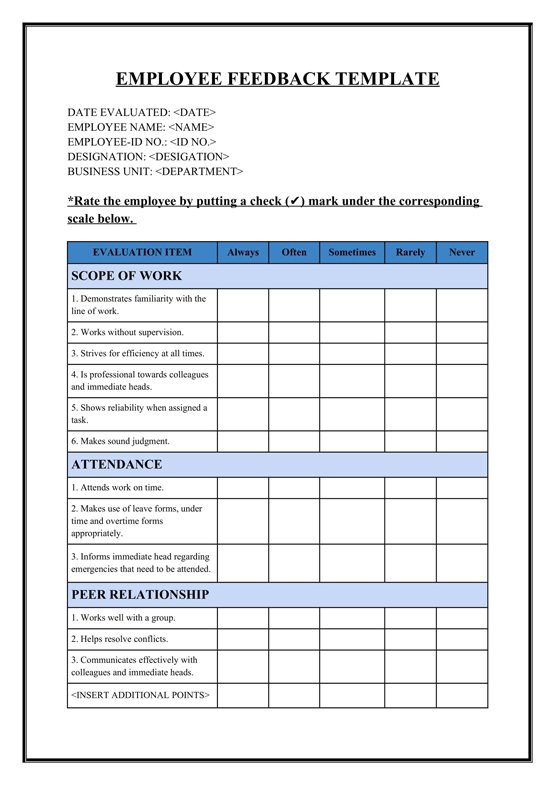
Crucially, emphasize the confidential nature of the feedback. Participants are far more likely to provide honest and constructive input if they know their responses will be aggregated and anonymized. This builds trust in the process and encourages genuine self-reflection and candid observations, making the entire exercise more valuable. The integrity of the feedback relies on creating an environment where honesty is rewarded, not feared. A robust 360 degree feedback questionnaire template should implicitly or explicitly communicate this commitment to confidentiality.
Key Dimensions to Assess
- Communication Skills: How effectively does the individual convey information, listen, and provide feedback?
- Leadership and Influence: Does the individual inspire others, make sound decisions, and guide their team?
- Teamwork and Collaboration: How well does the individual work with others, share responsibilities, and contribute to group goals?
- Problem-Solving and Decision-Making: How adept is the individual at identifying issues, analyzing solutions, and making informed choices?
- Adaptability and Resilience: How well does the individual adjust to change, learn from mistakes, and navigate challenges?
- Drive for Results: Is the individual focused on achieving goals, taking initiative, and delivering high-quality outcomes?
Implementing and Leveraging Your 360 Degree Feedback Insights
Once your carefully crafted 360-degree feedback questionnaire is ready, the next phase involves thoughtful implementation and, most importantly, leveraging the data collected. Distributing the questionnaire should be done systematically, perhaps through an online platform that ensures anonymity and ease of completion. Communicate clearly the purpose of the exercise, the timeline for completion, and how the feedback will be used. Setting expectations upfront encourages participation and reinforces the professional nature of the process.
After the feedback has been collected, the real work begins: analyzing the responses. This isn’t just about tallying scores but identifying patterns, common themes, and significant outliers. Look for consistency across different feedback sources, but also pay close attention to areas where perceptions diverge. These discrepancies can be particularly insightful, highlighting blind spots or areas where an individual’s self-perception might differ from how others perceive them. Aggregated data provides a powerful foundation for understanding an individual’s strengths and areas for development.
The delivery of feedback is a critical moment. It should be a constructive, forward-looking conversation, not a critique session. Focus on developmental opportunities and collaborate with the individual to create a personal action plan based on the insights gained. The goal is to empower the individual to take ownership of their growth, providing them with the tools and support needed to address areas for improvement and capitalize on their strengths. This might involve setting specific, measurable goals, identifying training opportunities, or mentoring relationships.
Ultimately, the power of 360-degree feedback lies in its ability to drive continuous improvement. It shouldn’t be a one-off event but rather an integral part of an ongoing performance management and development cycle. Regularly revisiting feedback, tracking progress, and providing follow-up opportunities reinforces the organization’s commitment to employee growth. By embedding this cyclical process, the insights gained from each questionnaire become building blocks for sustained professional development and a more adaptive, high-performing workforce.
- Provide a dedicated and secure platform for questionnaire completion.
- Establish clear deadlines and send gentle reminders.
- Train managers on how to effectively interpret and deliver feedback.
- Encourage the creation of specific, actionable development plans.
- Schedule follow-up sessions to review progress and offer ongoing support.
Harnessing the full potential of your workforce involves more than just traditional performance reviews. It requires a nuanced understanding of individual strengths and areas for development from multiple vantage points. By systematically gathering insights from a diverse group of colleagues, you empower individuals to gain a richer self-awareness, fostering personal accountability for their growth journey.
Investing time in creating a comprehensive and thoughtfully designed questionnaire, coupled with a robust implementation strategy, is an investment in human capital. It cultivates a feedback-rich environment where continuous learning is not just encouraged but actively facilitated, ultimately contributing to a more engaged, effective, and resilient organizational culture.
